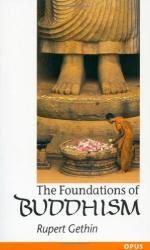
|
| Name: _________________________ | Period: ___________________ |
This test consists of 5 multiple choice questions, 5 short answer questions, and 10 short essay questions.
Multiple Choice Questions
1. An awareness of ourselves as thinking subjects is called _____.
(a) Karma.
(b) Self-conscousness.
(c) Regret.
(d) Self-loathing.
2. A _____ is a being from a lower realm of existence in Buddhist cosmology.
(a) Hungry ghost.
(b) Happy human.
(c) Martyr.
(d) Lost angel.
3. After his awakening, the Buddha was thought to still have an attachment to the _____ of awakening.
(a) Sound.
(b) Seat.
(c) Tree.
(d) Feeling.
4. Samsara is _____.
(a) Heaven.
(b) Death.
(c) Chakra light source.
(d) The round of rebirth.
5. Where did the Buddha sit twenty-one days after his awakening?
(a) The House of Candles.
(b) The House of Karma.
(c) The House of Jewels.
(d) The House of Dharma.
Short Answer Questions
1. The Buddhist texts call the physical world _____.
2. The lam rim in _____ Buddhism is called the gradual path.
3. One of the basic critiques of self in Buddhism that implies a constant that Buddhism believes is not constant is _____.
4. The Mahayana view of the universe is that, ultimately, only the _____ is real.
5. All Buddhism knows the story of the ascetic, _____.
Short Essay Questions
1. What does Nagasena tell the king about the self?
2. What miracle did the Buddha perform after his awakening?
3. What did the Buddha say of the beginning of samsara?
4. How are the thirty-one levels of existence classified? Who resides in these realms?
5. What is bhavanga?
6. What components, according to Buddhist thought, comprise a world-sphere?
7. What is the legend of Megha?
8. What are the five precepts of the lay followers in Buddhism?
9. What is dependent arising?
10. What is causal connectedness?
|
This section contains 632 words (approx. 3 pages at 300 words per page) |

|




